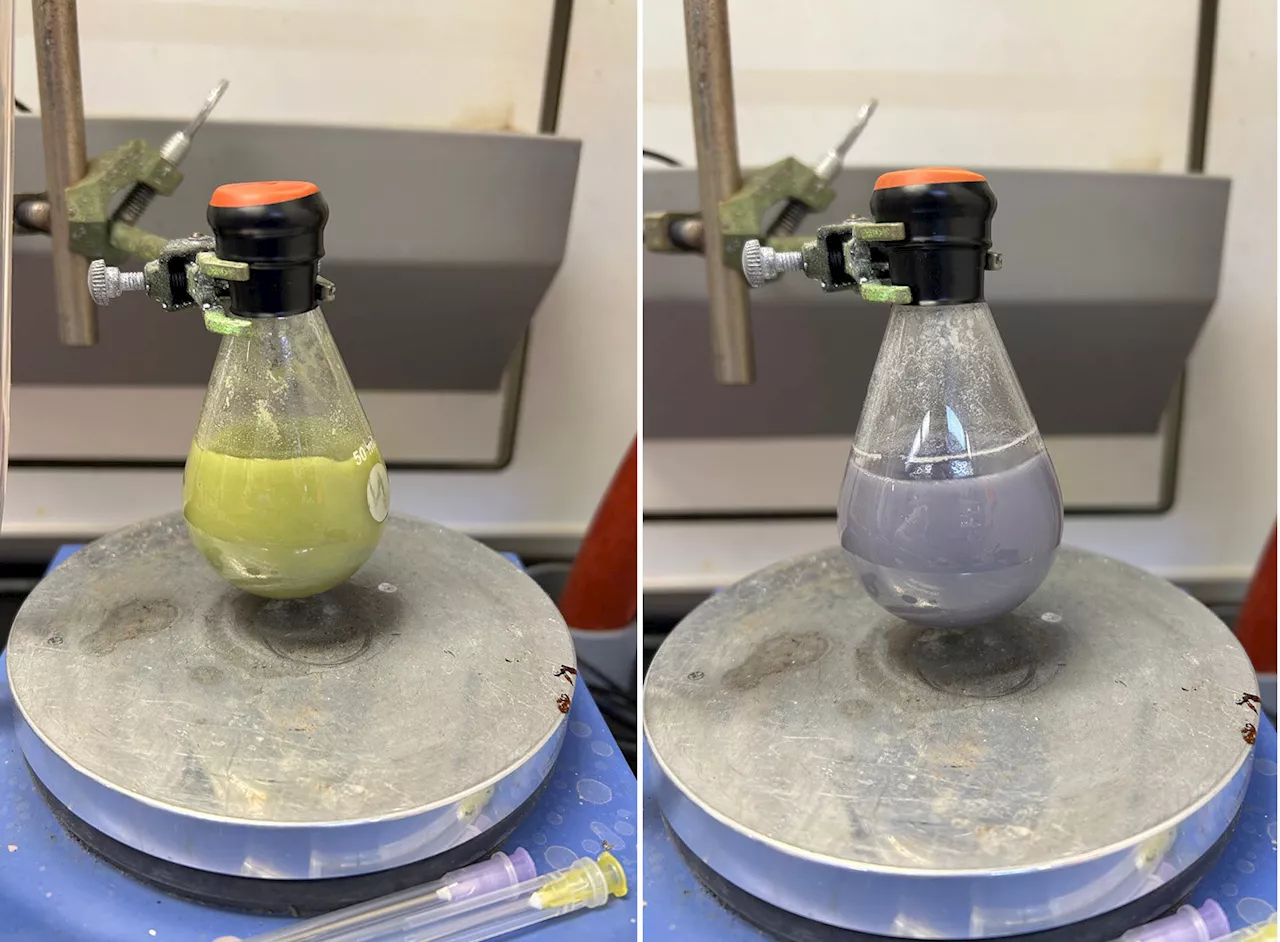The metallic element samarium, when bound with other elements, is an incredibly useful chemical reagent for synthesizing molecules that can lead to new pharmaceuticals.
Chemists succeed in upscaling a common reagent for industrial level applications retrieved 23 August 2024 from https://phys.org/news/2024-08-chemists-succeed-upscaling-common-reagent.html
This document is subject to copyright. Apart from any fair dealing for the purpose of private study or research, no part may be reproduced without the written permission. The content is provided for information purposes only.Use this form if you have come across a typo, inaccuracy or would like to send an edit request for the content on this page. For general inquiries, please use ourThank you for taking time to provide your feedback to the editors.
Your feedback is important to us. However, we do not guarantee individual replies due to the high volume of messages.to let the recipient know who sent the email. Neither your address nor the recipient's address will be used for any other purpose. The information you enter will appear in your e-mail message and is not retained by Phys.org in any form.Get weekly and/or daily updates delivered to your inbox.
Physics News Science News Technology News Physics Materials Nanotech Technology Science
United States Latest News, United States Headlines
Similar News:You can also read news stories similar to this one that we have collected from other news sources.
 Chemists reveal how Rembrandt combined special pigments for golden details of 'The Night Watch'Chemists at the Rijksmuseum and the University of Amsterdam (UvA) have for the first time established how Rembrandt applied special arsenic sulfide pigments to create a 'golden' paint.
Chemists reveal how Rembrandt combined special pigments for golden details of 'The Night Watch'Chemists at the Rijksmuseum and the University of Amsterdam (UvA) have for the first time established how Rembrandt applied special arsenic sulfide pigments to create a 'golden' paint.
Read more »
 Unique Pigments Discovered: Chemists Unveil New Secrets of Rembrandt’s Famous Painting “The Night Watch”Science, Space and Technology News 2024
Unique Pigments Discovered: Chemists Unveil New Secrets of Rembrandt’s Famous Painting “The Night Watch”Science, Space and Technology News 2024
Read more »
 Chemists develop new sustainable reaction for creating unique molecular building blocksPolymers can be thought of like trains: Just as a train is composed of multiple cars, polymers are made up of multiple monomers, and the couplings between the train cars are similar to the chemical bonds that link monomers together.
Chemists develop new sustainable reaction for creating unique molecular building blocksPolymers can be thought of like trains: Just as a train is composed of multiple cars, polymers are made up of multiple monomers, and the couplings between the train cars are similar to the chemical bonds that link monomers together.
Read more »
 Chemists develop new sustainable reaction for creating unique molecular building blocksPolymers can be thought of like trains: Just as a train is composed of multiple cars, polymers are made up of multiple monomers, and the couplings between the train cars are similar to the chemical bonds that link monomers together.
Chemists develop new sustainable reaction for creating unique molecular building blocksPolymers can be thought of like trains: Just as a train is composed of multiple cars, polymers are made up of multiple monomers, and the couplings between the train cars are similar to the chemical bonds that link monomers together.
Read more »
 Chemists synthesize plant-derived molecules that hold potential as pharmaceuticalsMIT chemists have developed a new way to synthesize complex molecules that were originally isolated from plants and could hold potential as antibiotics, analgesics, or cancer drugs.
Chemists synthesize plant-derived molecules that hold potential as pharmaceuticalsMIT chemists have developed a new way to synthesize complex molecules that were originally isolated from plants and could hold potential as antibiotics, analgesics, or cancer drugs.
Read more »
 Chemists synthesize plant-derived molecules that hold potential as pharmaceuticalsChemists developed a way to synthesize complex molecules called oligocyclotryptamines, originally found in plants, which could hold potential as antibiotics, analgesics, or anticancer drugs.
Chemists synthesize plant-derived molecules that hold potential as pharmaceuticalsChemists developed a way to synthesize complex molecules called oligocyclotryptamines, originally found in plants, which could hold potential as antibiotics, analgesics, or anticancer drugs.
Read more »
